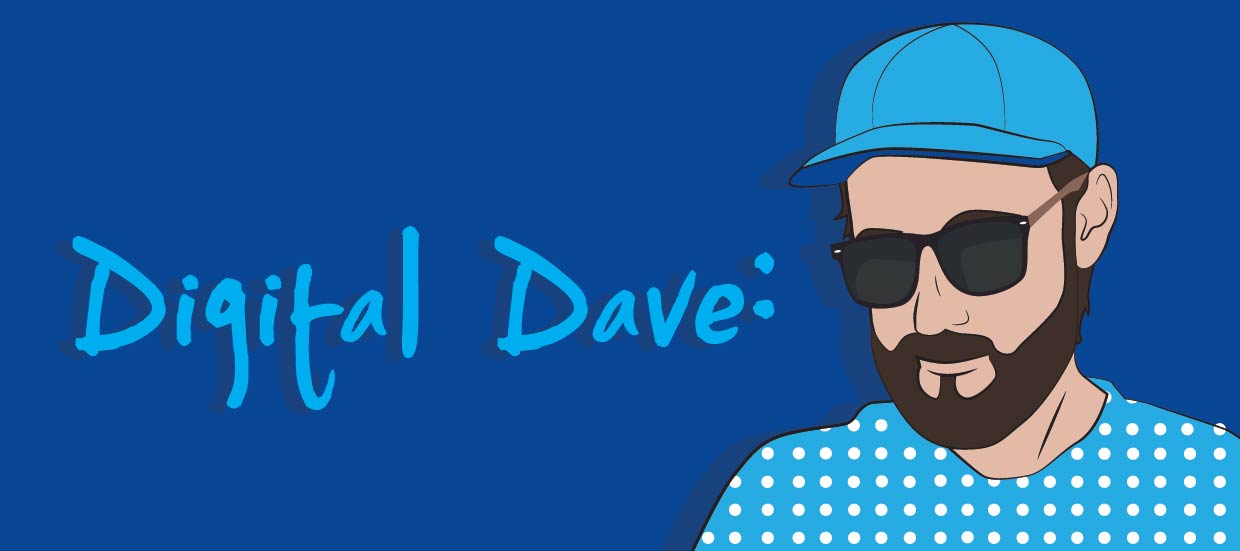Digital Dave: The Benefits of Digital Signage
The Benefits of Digital Signage
We are starting to see more and more digital signage installed throughout New Zealand in our airports, retail stores, education, and banking sectors. However, there are still many businesses that are unsure about the benefits of this relatively new medium, the total cost of ownership, and the return on investment.
To get any messaging across to people, they first need to be paying attention to your message. You can put your advertising and brand out there but if nobody is taking note of it, then what's the point?
Today, the traditional way of portraying a message isn't as effective. With online streaming for both video and music, people reading newspapers online, the number of people viewing and retaining TV, radio, print and poster advertising is declining. Unsurprisingly, Digital Signage is growing more prominent with a projection of $32.12 billion by 2026, a solid increase from 2019 where it was worth $20.8 billion. Asia-Pacific is predicted to exhibit the highest demand and growth during this period.
If we examine the health vertical as an example, with the fast-changing Covid-19 pandemic, digital signage would have been an enormous help. It would have allowed the platform to provide one of the most valuable commodities: information. Sharing essential and up to date information is critical in keeping both employees and customers safe and informed.
Many healthcare providers, such as doctors, pharmacies, and hospitals, need to get important messages across to patients and customers. Using traditional print signage, this has been increasingly hard to manage. By the time posters have been designed, printed and installed onsite, the information has likely already changed and needs to be updated. In a rush to be timely, what has happened is stores print their posters on their A4 desktop printers and these end up strewn all over the shop, with little impact or desire for customers to read them.
With digital signage, this information would be designed, scheduled and displayed on-screen exceptionally quickly. It also has a much higher retention rate than traditionally printed posters, achieving 400% more views than static signage*
Digital signage has a retention rate of 85%. It reduces the perceived wait time by up to 35%, which is remarkable considering we are always waiting to see the doctor, nurse, and dentist, for example, and now, at supermarkets! The benefits are genuine and measurable.
The need to be able to get an important and accurate message across has never been so critical, yet as you can see from almost every picture in the media lately the majority of our healthcare providers didn't have that capability unfortunately, but I can assure you they are all looking at it now.
Dynamic digital signage gives the ability to create engaging content. It can update and publish new content to digital displays instantly. There is no need to wonder if stores have even implemented promotional material. The Brand Manager will know that the right messaging is up and matches company branding and guidelines.
Some of the most significant opportunities out there at the moment are in the retail, health and safety, and corporate. In each of these verticals, digital signage can offer considerable advantages, and work in unison with traditional printed media to improve the overall impact.
So what are the benefits? Let’s break them down:
Multiple content:
The ability to be able to display various pieces of dynamic content on display at the same time is a huge advantage. With Covid-19 for example, hospitals and other medical facilities could have been displaying the latest, to-the-minute, information.
Remote management
Having the ability to check what content the displays are showcasing, and being able to turn the volume up or down, change source and have the screens secured so they can't be hacked.
Easy to update/live
With a cloud-based solution, you can log in from anywhere in the world and be able to see what the screens are displaying, and update information and content on the go. You can also utilise live feeds and data, website content, and link it to databases or POS systems. You can have event-driven content that will display different information on the screen depending on what item has been picked off a retail shelf. You can measure the audience based on gender and age bracket, depending on where they dwell. And, if it starts raining outside, it can also change the content on the screen to promote hot drinks and umbrellas!
Schedules
Ability to display different content depending on what time and day of the week it is, making sure that the material is relevant to the audience at various times during the day.
Reduced costs
While it might seem that digital costs more over time, this isn't true. While there are the initial upfront hardware and software costs to take into consideration, by using the right commercial displays, we need to look into the TCO (total cost of ownership).
The Samsung displays all have a minimum 3-year warranty. If we use a 55" as an example, the costs break down like this:
Screen: $2000
Software, hosting etc. (3 years) $1000
This breaks down to $83 per month per screen with unlimited ability to change, update and refresh content.
It is cheaper again if you base it on the MTBF (mean time between failures) which on most is at least 50,000 hours, then using the screen for 12 hours a day would work out to be 4,166 days or, 11 years! When looking at it like this, you can see why the reduced cost is a significant benefit.
High Impact
Digital signage offers 400% more views than static signage, along with an 85% retention rate. There is no doubt it can provide a much higher and impactful way to convey a message.
*A Report on a Field Trial of Anonymous Video Analytics (AVA) in Digital Signage


